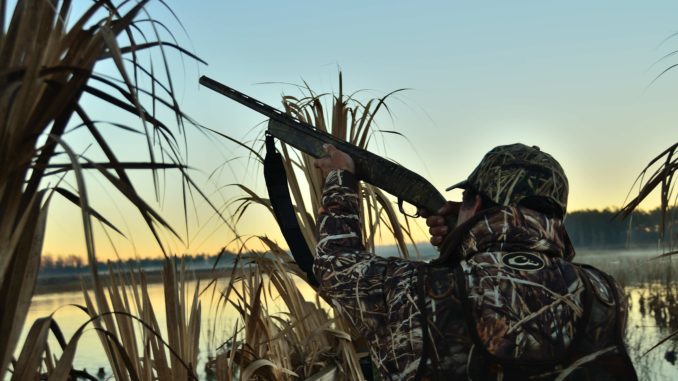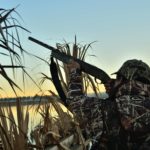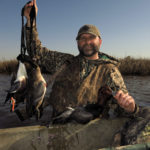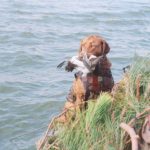
November is the first month when North Carolina waterfowlers can really expect a good bit of action, especially on the sprawling Pamlico Sound.
Waterfowl season arrives across North Carolina on Nov. 14, and even though the often mild weather might not seem as perfect for a duck hunter as the late-season, ice-breaking mornings of January, don’t think the Old North State’s coastal sounds done offer some fantastic early season action.
In fact, half the 60 hunting days available to waterfowlers on the Atlantic Flyway are located on that part of the calendar before Old Saint Nick slides down the chimney.
Within a federal framework, the N.C. Wildlife Resources Commission opens a three-week season in mid-November, gives ducks two weeks to rest, then opens up six more weeks beginning Dec. 19. Many hunters don’t realized that the peak of the annual waterfowl migration through North Carolina is in November and December.
Pete Campbell, refuge manager at Lake Mattamuskeet for the U.S. Fish and Wildlife Service, spends 12 months of the year investigating the trails, impoundments and open-water areas on the refuge, getting a first-hand view of every wave of migrating waterfowl entering and leaving the refuge boundaries.
According to Campbell, the season that opens in November is a fantastic time for waterfowl.
“We start seeing ducks arrive as early as October here on the refuge, but the majority of the flocks arrive in November. That’s when they increase in numbers dramatically,” Campbell said. “The best times to come … is between Thanksgiving and Christmas.”
Of the 50,000 acres within the refuge boundaries, the lake covers 40,100 itself, and 2,500 acres are confined in managed impoundments. Beginning Nov. 1, all of the refuge’s waters — with the exception of minor acreage within the hunting area — are closed to boaters and disturbance.
“Our impoundments and lake provide food and resting areas for waterfowl, but these birds will trade off between the waters on the Pamlico Sound and our holdings,” Campbell said.
Lake Mattamuskeet’s premium waterfowl habitat is an excellent indicator of the migration’s progression. As birds begin to flood onto the refuge, hunters can expect similar numbers on the Albemarle and Pamlico Sounds.
Charlton Thornton, aka Captain Froggy, operates Captain Froggy’s Guide Service out of Engelhard. A fourth-generation waterfowler, he specializes in open-water unting on the Pamlico Sound. Thornton hunts every day of the 60-day season and will never shy away from hunting during the three-week segment of the season that opens in mid-November.
“Ducks in the early season are a lot less educated than in later seasons and easier to hunt,” said Thornton (252-661-7222). “They are less call-shy and normally in smaller groups, which makes them easier to decoy.”
Thornton also said the placement of North Carolina’s open season compared with Virginia’s season is a big consideration to early season success.
“The Virginia season opens a week after ours does in November. It helps to hunt ducks that haven’t been hunted yet. Less pressure improves hunting dramatically,” he said.
Out of his Engelhard base, Thornton can go 30 to 40 miles in about any direction across the Pamlico Sound to find ducks. At different times, ducks will frequently move around, often even during the early seasons.
Typically, ducks look for the best food source available as soon as they touch down from their flight south. Ducks expend tons of energy during migration, and food is at the top of their list when they arrive. In eastern North Carolina, between the Albemarle and Pamlico Sounds, the amount of available food in impoundments, swamps and in the shallow shorelines covering the region is astronomical this time of year, offering plenty of foraging opportunities. The ducks will stop somewhere, and knowing right where they make their first stops will be important to having an action packed hunt.
Thornton will invest hours and days to figure out where the hot zones are located.
“Scouting is the most-important thing to finding ducks. I burn a lot of gas scouting to see where the birds are throughout the season,” he said.
Thornton will not stop until he finds places where decent numbers of ducks are using, and then he will set up in those areas the next day. Unless they’re disturbed, ducks will utilize a food source, making thorough scouting well worth the effort.
One aspect Thornton always incorporates into hunts on the sound is a large decoy spread, which is critical on big water to gain the attention of ducks a long way off.
“Big numbers of decoys are key for us. We deploy anywhere from 150 to 250 decoys each day,” he said.
Over the years, Thornton’s decoy inventory has grown and shrunk. He mixes his decoys, no matter white species might be targeted on a specific day.
“The type of decoy really doesn’t matter that much,” Thornton said. “Puddle ducks and divers will come to anything, including sea duck decoys, but sea ducks will only come to sea duck decoys.”
In addition to having plenty of decoys, Mother Nature plays a critical role in the success of a duck hunter on the big water. When ducks find a good food source in the morning, away from predators, they may not fly much over the course of the day. Duck hunters need the birds to get up and fly to attract them to his decoy spread. For Thornton, wind is his friend.
“Having wind is critical because the wind makes the birds move around a lot more and gives them the opportunity to come to our decoys. For us, the wind cannot blow too hard, but we want at least a 15 mph wind to keep the birds moving,” he says.
Not only does wind keep birds changing places, it puts more life to the decoy spread, making it much easier to draw ducksinto killing range.
Diehard duck hunters wait all year for the chance to work a flock into shotgun range. And as soon as the first main season arrives in November, hunters should get out there and take advantage of the new arrivals. And the Pamlico Sound is a perfect place to set up a couple hundred decoys for the day with cooler of snacks and a few good friends.








Be the first to comment